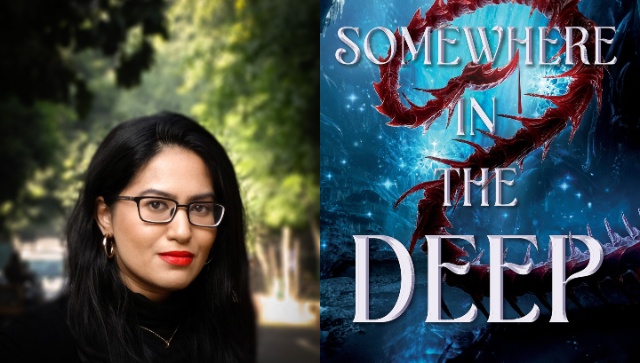Jacques Lipschitz, the Lithuanian-born French sculptor who escaped the Nazi regime only to settle in post-depression US, explained Cubism rather simply, as the change in view of a landscape as one climbed up and down a hill. Which is also how ‘perspective’ is born, and most of Cubism, according to what Lipchitz borrowed from it. It is perhaps ironic, that a sculptor best explained his idea of Art and his influences through the art of looking at a landscape. And it is referred to as art, here, largely for the reason that it has only accrued the reputation of something that is mechanical, almost uninspired.
Landscape painting is often shrugged off as one of those things that if not for the turgidity of its palette or the context of its subject, would be reduced to that decorative piece of an eye-to-somewhere. So passé has landscape painting become that it rarely elevates itself from being considered as one of those early things everyone does. Little do we know a way of looking at it, and by way of looking, finding a language to read differently from it.
Gopal Ghose’s The Chromatic Image, up at the Akar Prakar advisory in Delhi, is a way to having our first conversation with a master of the landscape.
Ghose, a little known entity, despite being one of India’s earliest modernists, was part of the Calcutta Group. A group that (though it did not with severity underline the motto, still) believed in tearing down the past, to uphold the possibilities of the future. It is perhaps is to be expected then that Ghose’s works show a strong influence of the west, of the early Cubists in particular. Most of Ghose’s landscape paintings were done on his travels throughout India. As a matter of education, Ghose trained both in Jaipur and Chennai, and ended up as faculty in Bengal. In line with his roving life experiences and influences, Ghose’s landscapes manufacture themselves as a function of creation and not reaction. Most landscape painters over the years have been criticised for wanting to imitate reality as a way to pass on their own stunted imaginations. Though Ghose borrows in some way a basic filling order – the sky, the house, the tree, the person – he does so with a splash of inspiration.
Gopal Ghose’s art is celebrated in new exhibition: Here’s a look at some of his best paintings
Ghose’s early works mark his reaction to the state of the country. The Bengal famine, the fight for Independence and the turbulent times were the mirrors off which his early sensibilities reflected. Whether it be the burning automobiles, or the dewless sunburned pastures of Bengal, his paintings presented a hauntingly grim picture. Most of the paintings on display here, suggest of a departure from that tumultuous period. Ghose is evidently on the move, and sees different parts of the country, in different lights. The horizon morphs, the trees dress and undress, while life moves on, hardboiled and reaffirmed by the glow of naturalness around. His paintings through the ’50s are marked with a distinct vibrancy of colour, dominated largely by the tropical heat of the country. As we move towards some of his older works, there is a steadiness in the stroke, a more limited view of the ordinary and a quest to find something exceptional still.
What is remarkably clear about Ghose’s work is his tendency to see the elements of his landscape within the same plane; which is to say, that he neither cares for the scale nor perhaps, for the pretence of reality; the tree, the sky, the house, the destitute villagers, all exist, as if roughly to the same dimensions. While that is akin in a way to the likes of Picasso, in the case of Ghose, his inspiration is strictly away from the jaggedness of the urban, in the flowing sense of the rural. For the uninitiated, and particularly those who are driven by the narrative of structure, of the urban milieu of sharp shapes and strictly held motifs, there might be little to stick your feet in here. Ghose’s randomness, his obscurity in shape, and scale requires one to be appreciative of not what is necessarily present, but also what has been omitted.
The problem in interacting with landscape painting is the sheer ubiquity of its many derivations available to the daily experience. It only serves to limit the art to postcard-quality and inspiration. But it is much more, so much more. For our own sensibilities, so shunned and tortured by the black-blue-white-grey themes of cinema, concrete and urbaneness, Ghose can serve as a window to something unique. With the way green India is being swept under the carpet of the animal that is the city, it is perhaps timely, and a godsent that a Gopal Ghose rear its head amidst the noise. Sort of to help you return to that window you always wish you had to look out of in the morning. It is already, perhaps, a figment of the imagination. Why not look through it then, to find more?
‘The Chromatic Image — Gopal Ghose’ exhibition is on display at the Akar Prakar Art Advisory, New Delhi from 20 April to 17 June 2017, in association with Firstpost.


)




)
)
)
)
)
)
)
)